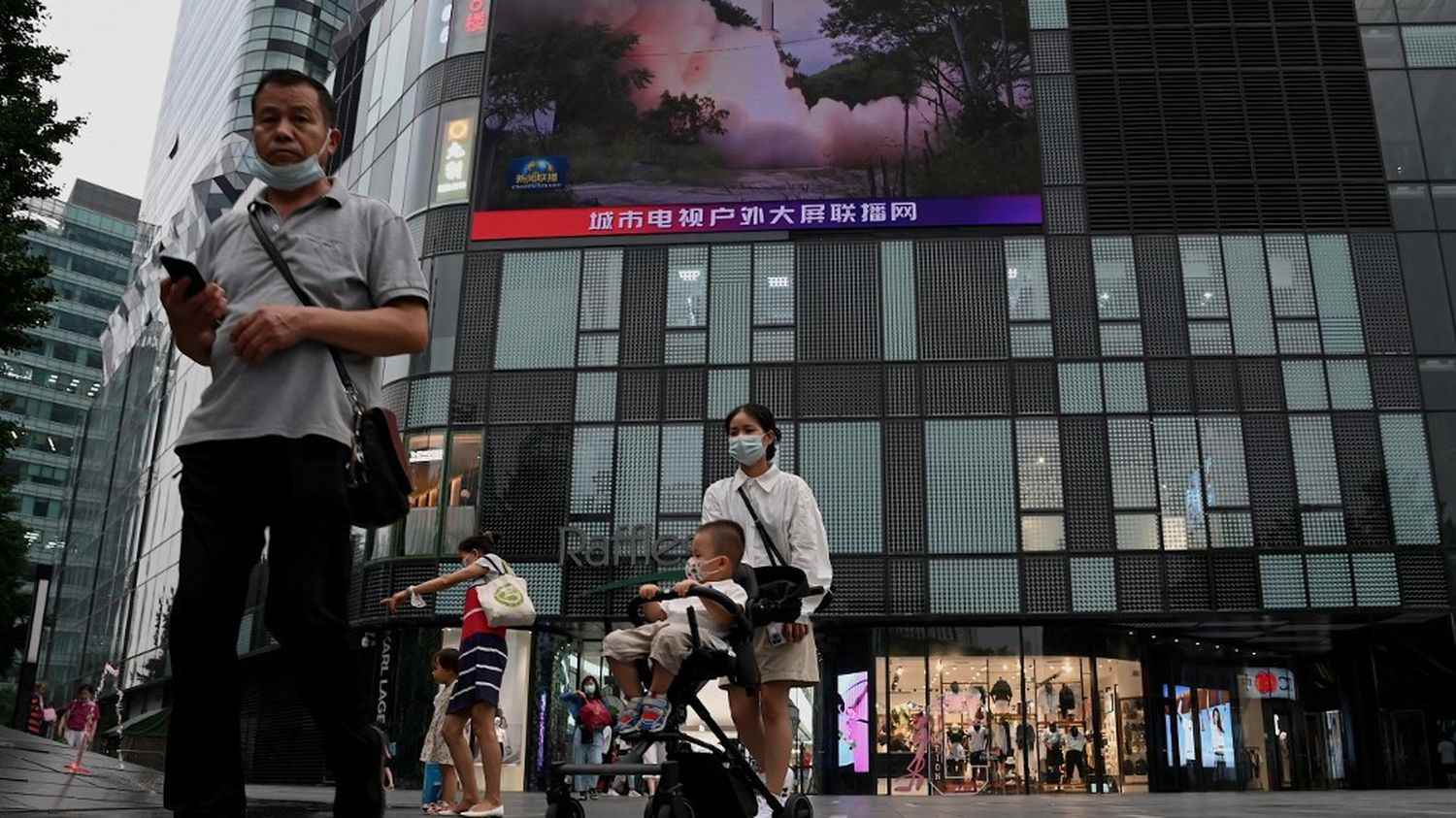Taiwan “prepare for war”. As expected, the China has started its military exercises around the archipelago, announced the Chinese public television CCTV on Thursday August 4th. The day before, the spokesman for the island’s Ministry of Defense had castigated “an irrational act aimed at challenging the international order”. These maneuvers, the largest ever organized around this territory claimed by Beijing, come after the visit of the elected American Nancy Pelosi to the island on Wednesday August 3, in a context of rising tensions with the United States.
Do these exercises risk leading to a military escalation in the region? What objectives are behind the actions of the Chinese regime in recent days? Antoine Bondaz, head of the Taiwan program at the Foundation for Strategic Research (FRS), responds to franceinfo.
Franceinfo: Is there a risk of military escalation in the Taiwan Strait given recent events?
Antoine Bondaz: The risk of willful escalation is extremely low. Both on the side of China and that of the United States, no one has entered into a logic of escalation, despite the recent declarations that we have heard on both sides. The military exercises that China has announced it will undertake in the Taiwan Strait do not directly target American troops.
Moreover, this risk of escalation is low because on the Chinese side, there is no mobilization of forces that would imply a scenario of invasion of the island as we saw with Russia against the Ukraine, a few weeks before the start of the conflict.
How to interpret these Chinese military exercises, announced following Nancy Pelosi’s visit to Taiwan?
These military exercises are unprecedented because of their scale and the means mobilized. But it is above all their intensity and their nature that are unprecedented.
“Some of the areas announced for military exercises are inside Taiwanese waters. This has never happened before.”
Antoine Bondaz, head of the Taiwan program at the Foundation for Strategic Researchat franceinfo
In the mid-1990s, during what was called the “3rd Strait Crisis”, China had already conducted exercises in the Taiwan Strait, but they were much further away. Today, some will take place on the east coast of Taiwan, in the Pacific, which is also unprecedented.
Through these military exercises, China intends to convey several messages. The first is sent to the Chinese people. The goal is to show that the army, which depends on the Communist Party, will defend what the Chinese regime considers to be their “national interest”. The second is sent to the power and the people of Taiwan: with these maneuvers, China tries to demoralize the Taiwanese people and convince them that the armed forces of the island do not measure up.
The last message is sent to the international community. China is trying to test the United States’ response and its determination to continue to defend the security conditions it is bringing to Taiwan. But it also tries to test the cohesion of the international community.
“The fact that today there is this united Western front to condemn these exercises is extremely important.”
Antoine Bondazat franceinfo
On Wednesday, the G7 strongly condemned (in a press release) these military exercises, even before they began. It is also unprecedented.
How do these exercises reinforce China’s military strategy vis-à-vis Taiwan established in recent years?
The unprecedented intensity of these military exercises is part of a Chinese strategy of diplomatic and military pressure put in place on Taiwan since 2016. China is trying to get closer and closer to the archipelago by standardizing its military exercises around and near Taiwan. In recent days, the Chinese discourse has been precisely to make these exercises appear legitimate because they were decided in reaction to the visit of Nancy Pelosi.
“China is only instrumentalizing Nancy Pelosi’s visit to continue its dynamic of military pressure established for several years.”
Antoine Bondazat franceinfo
The events of recent days are also an opportunity for China to continue training its army. The country needs to practice joint operations which mobilize the navy, the air force and the army of missile launchers. Compared to the United States, China has very little experience in this area.
Since the end of the Cold War, Beijing has worked extensively to modernize its military forces. In this sense, the dedicated budget has been multiplied by six in twenty years, according to data provided by theStockholm International Peace Research Institute, it was 293 billion dollars in 2021. The country has thus considerably strengthened its ballistic capabilities. Its missiles are much more accurate than twenty years ago.
For several years, the Chinese media have been constantly highlighting their anti-ship ballistic missiles. Behind, the message is clear: such weapons would make it possible to target American aircraft carriers. But that does not mean that the United States could not intervene at all. Similarly, all this modernization does not mean that China today has the capacity to invade Taiwan.
